Buckeye Tree
The Buckeye Tree, also known as the Ohio Buckeye or the American Buckeye, is so identified with the state of Ohio that it is the official state tree. This makes it the most ‘Ohioan’ of all the trees appearing in the state.
The Buckeye Tree will always be associated with Ohio because the Ohio Territory was the first area to be settled after the Revolutionary War. When these early settlers arrived here, one of the things they first noticed were the buckeye trees.
Some might think the Buckeye tree is only found in Ohio. This is mostly true, but it is found elsewhere, just not in as great of numbers as here. This was particularly true back in the days when explorers, surveyors and settlers were first arriving here.
Buckeyes prefer moist, well-drained soils to grow in. They often grow in the understory of a woodland, enjoying partial sunlight.
Buckeye tree leaves are what naturalists call ‘palmately compound’, meaning a cluster of leaflets growing from a single point at the end of a stalk. In the case of the Buckeye, there are 5 glossy leaflets growing in such clusters.
Buckeye leaves show up early in the spring, and their clusters are distinctive.
Spring also brings the distinctive yellow-green flowers of the tree.
The fruit of the tree shows itself in the summer. Growing singly or in clusters, it encases the Buckeye that all Ohioans recognize-
This is the classic Buckeye.
The name for the tree originates from the seed the tree produces each fall. It is a glossy dark brown color that resembles the eyes of deer, hence the “buck” eye.
The term buckeye is an Anglicized form of an Indian term for the nuts. They called them “HETUCK” which meant “eye of the buck” because of the resemblance in color and shape between the brown nut and the eye of a large deer.
Although the Buckeye nut is inedible to humans, squirrels eat them. In pioneer times, the nuts were thought to bring good fortune and were perceived to cure minor ailments. Perhaps this has something to do with why Buckeye wood was once used for artificial limbs.
The nuts are also the inspiration for buckeye candy, consisting of peanut butter fudge balls dipped in chocolate 🙂
The bark of the tree is also rather distinctive, only gaining a fissured bark appearance (typical of such trees as Oaks and Walnuts) as the tree ages.
Overall, the Buckeye Tree stands out in the midst of other trees for the various reasons pointed out. It does seem to suffer significantly from such disorders as leaf blotch and leaf scorch, similar to other related trees in the Horsechestnut family.
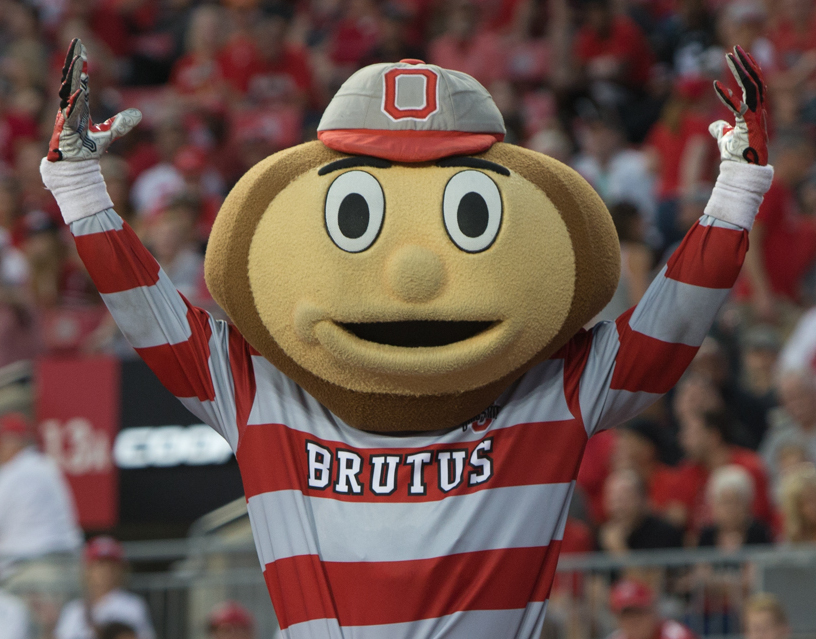
Source: Wikipedia
One occasionally sees commercial varieties of the Buckeye Tree on front lawns, undoubtedly popular with Ohio State University fans, since ‘OSU Buckeyes’ are the mascots of the university. ‘Buckeye’ is a proud moniker for Ohioans now, although in the 19th century it originated as a term of derision, similar to calling someone a ‘hayseed’. I’ll take the proud version current today!


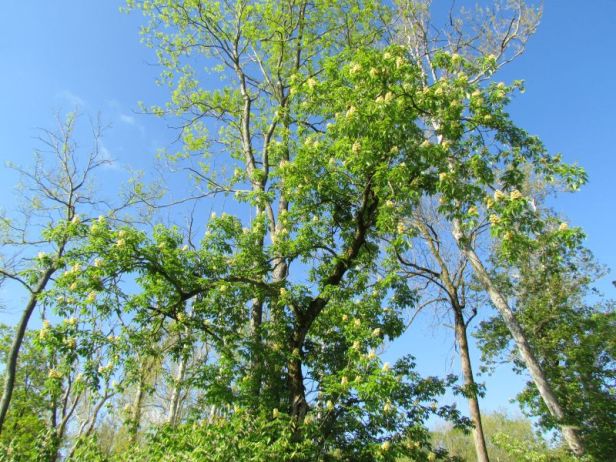



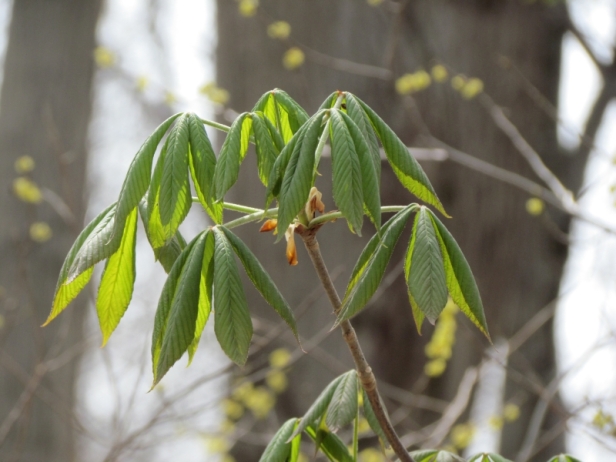
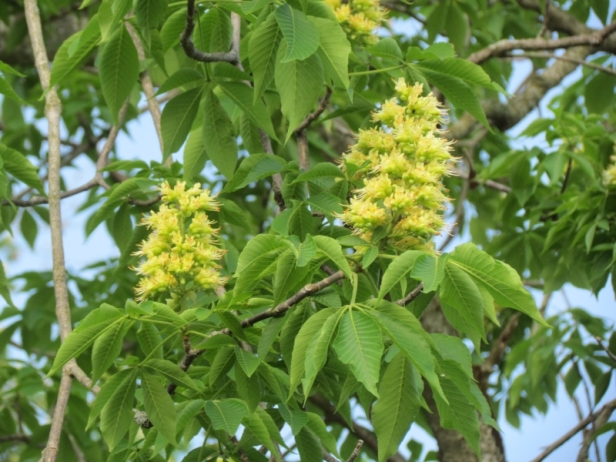




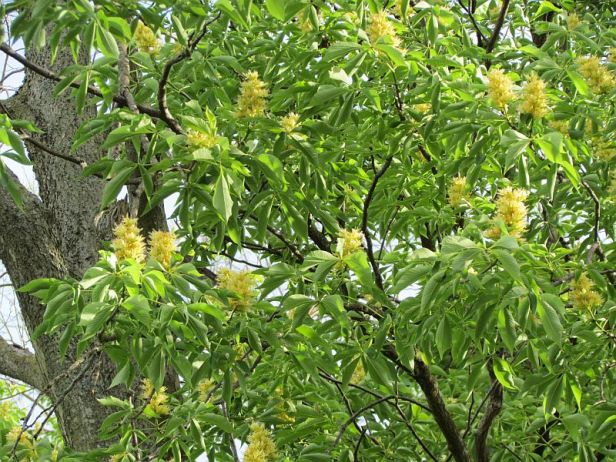
Thanks for posting about this fascinating tree!
I should have done this post long ago, considering the Buckeye is the state tree!
Our horsechestnuts are suffering badly from a disease called bleeding canker. I hope that your Buckeye doesn’t suffer too.
Sad to hear, Tootlepedal. Apparently our Horsechestnuts have similar issues.
Did a quick search (since we have a horse chestnut with a different issue) and wanted to pass this along in case you haven’t heard of this treatment https://ag.umass.edu/landscape/fact-sheets/phytophthora-bleeding-canker
Nice link, Inger!
I always look forward to your articles with my morning coffee. Thanks.
Thank you, Beverly!
I’d heard of the Buckeye but never realized they were related to the horse chestnut which we have. One of my favorite trees, it often gets some kind of leave issue, but manages to stay more of less healthy (knock wood).
Sounds like both trees suffer from the same maladies, Inger- very pleasant trees though!